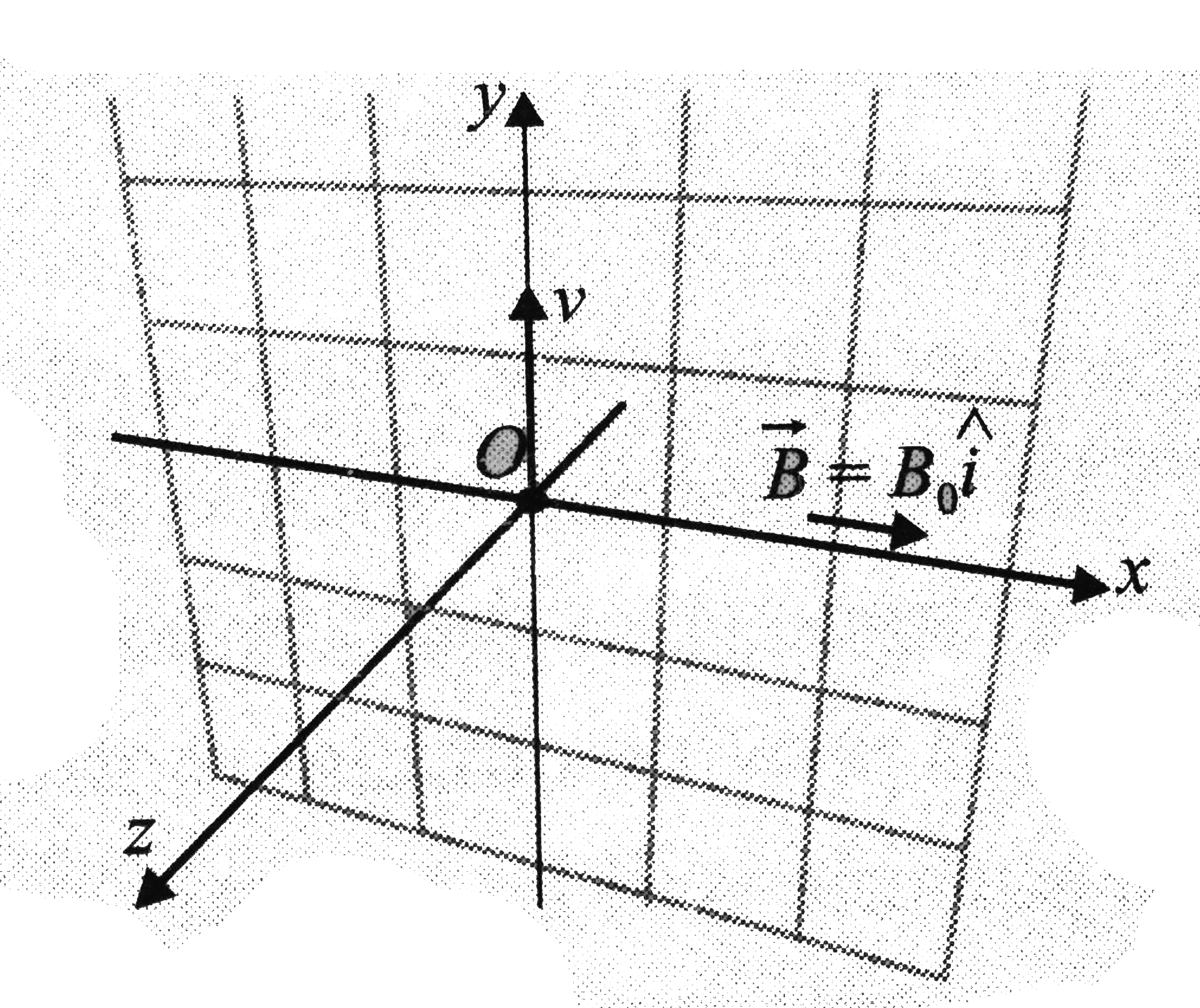A particle of mass m and charge q is moving in a region where uniform, constant electric and mangetic fields →Eand→B are present. →Eand→B are parallel to each other. At time t=0, the velocity →v0 of the particle is perpendicular to →E (Assume that its speed is always <<c, the speed of light in vacuum). Find the velocity →v of the particle at time t. You must express your answer in terms of t,q,m, the vector →v0,→E and →B and their magnitudes →v0,→E and →B.
The correct Answer is:→=→v0cos(qBtm)+qt→Em+⎡⎢ ⎢⎣(→v0×→B)Bsin(qBtm)⎤⎥ ⎥⎦
→v=→v0cos(qBtm)+qt→Em+⎡⎢
⎢⎣(→v0×→B)Bsin(qBtm)⎤⎥
⎥⎦
Let velocity of the particle be v0 in x direction and B is in y-direction and →v at time t
→F=q(→E+→vx→B),→v=vxˆi+vyˆj+vzˆk,→F=m(dvxdtˆi+dvydtˆj+dvzdtˆk)
=q(Eˆj+(vxˆi+vyˆj+vzˆk)×→Bˆj),mdvxdt=qvzB,mdvydt=dE,mdvzdt=qvxB
md2vxdt2=−qBdvzdt,md2vxdt2=−qBdBvxm
d2vxdt2+(qBm)2vx=0

vz=vy=0,vx=v0 at time t=0
vx=v0cosqBmt:vy=(qEm)t
vz=v0sin(qBm)t
Velocity of the particle →v=→v0cos(qBtm)+qt→Em+⎡⎢
⎢⎣(→v0×→B)Bsin(qBtm)⎤⎥
⎥⎦
Similar Questions
Knowledge Check
A particle of charge q and mass m starts moving from the origin under the action of an electric field →E=E0ˆi and →B=B0ˆi with a velocity →v=v0ˆj. The speed of the particle will becomes √52v0 after a time
Amv0qE0Bmv02qE0C√3mv02qE0D√5mv02qE0
A particle of mass m and charge q is moving in a region where uniform electric field −−→E and and uniform mag-netic field −−→Bare present. It is given that −−→E∣∣→E∣∣=−−→B∣∣→B∣∣. At time t = 0, velocity of the particle is −−→V0 and −−→V0.−−→E=0. Write the velocity of the particle at time t.
View SolutionAn electric field (vec E) and a magnetic field (vec B)exist in a region . The fields are not perpendicular to each other.
View SolutionIf ∣∣→a+→b∣∣=∣∣→a−→b∣∣, show that the vectors →aand→b are perpendicular to each other.
View SolutionA particle having mass m and charge q is released from the origin in a region in which electric field and megnetic field are given by →B=−B0ˆj and →E=→E0ˆk. Find the speed of the particle as a function of its z-coordinate.
View SolutionIf →a+→b+→c=→0, −→|a|=3, ∣∣→b∣∣=5 and |→c|=7.
Find the angle betweeen →a and →b
View SolutionA charge particle of mass m and charge q is projected with velocity v along y-axis at t=0.

Find the velocity vector and position vector of the particle →v(t)and→r(t) in relation with time.
View SolutionTwo vectors →a and →b are perpendicular to each other if →a.→b=0.
View Solution
